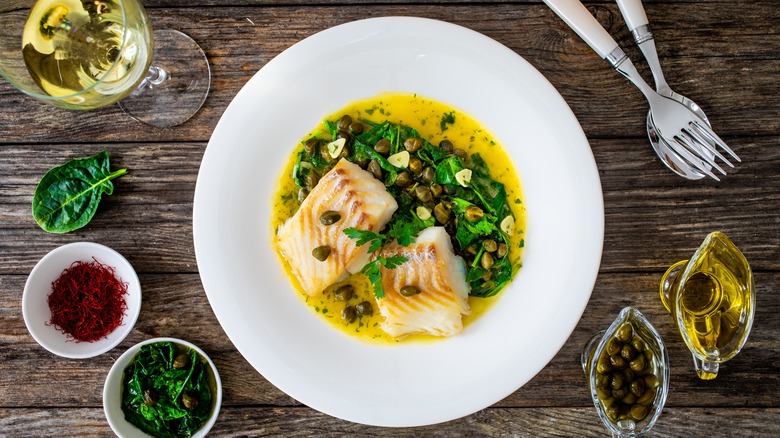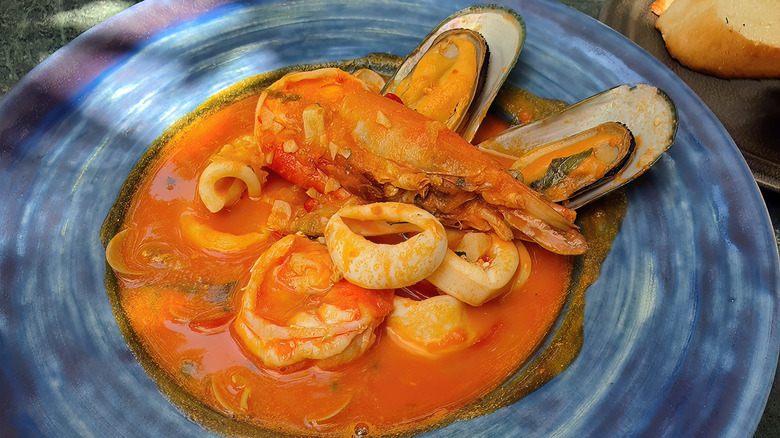For Restaurant-Worthy Seafood, Focus On Simple Ingredients
If you want to recreate your favorite restaurant dishes, it can be a struggle to identify just what ingredients go into each dish, but one area where you can have a lot more success is with seafood. Look back at the most memorable seafood dishes you've had at restaurants over the years, and you'll usually find something they had in common: they're simple. Mussels in a light white wine broth, salmon rubbed with a few spices and grilled over an open flame, etc.
The sauces are straightforward, the ingredients are out in the open, the flavors are light. Restaurants will do this for a number of reasons, it saves money and labor, for one, and because most seafood has a mild taste that can be overwhelmed by heavy, rich flavors. And this has one big advantage for you they probably weren't thinking about — It makes it a lot easier to recreate those seafood dishes at home.
Adopting the same mindset towards your seafood as a chef is easier than you might think. Identify just a few key ingredients that will complement the taste and texture of your fish or shellfish without covering it up too much, and make sure they are of the highest quality. It doesn't take a lot of fancy technique or experience to make a spicy cioppino; that broth is just tomatoes, wine, and stock, and if any of those three things aren't quality, you are going to notice it when you take a taste.
For chef-level seafood dishes, high-quality ingredients are key
The place to start for the best seafood is with the star itself. Local sustainably caught or raised seafood is the best option, and you are most likely to find that at a fish market in regions close to the source. If you aren't somewhere close to fresh seafood sources, frozen is going to be better. Freezing seafood right after it's caught actually helps preserve flavor better than fresh options that have been languishing in storage for days. Freezing techniques for seafood have also improved dramatically in recent decades, making for a higher-quality meal.
Don't go too far beyond that, sticking to simple broths and pan sauces or basic spice rubs for more meaty fish. Think of a simple garlic butter sauce and maybe some wine to deglaze the pan. For broth, take inspiration from French bouillabaisse, with a few aromatics sauteed in olive oil, fish stock, and maybe a little alcohol for added complexity — five or six ingredients max.
As for the rest, stocks should ideally be homemade, as even the best store bought versions won't touch them, and good extra virgin olive oil is worth investing in. The wine should be something you would drink, and the herbs should be fresh. Tomatoes will usually be best canned, but your other vegetables and aromatics should be farmers market fresh and in season. If you keep it fresh and keep it simple, you'll do what restaurants do and let the seafood shine.

